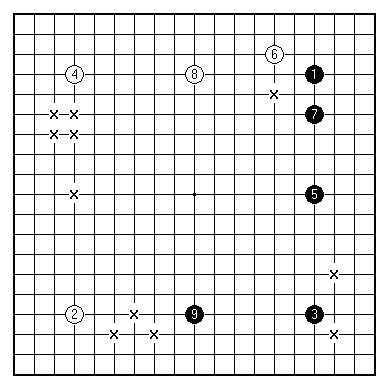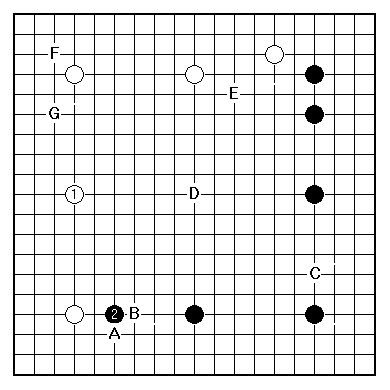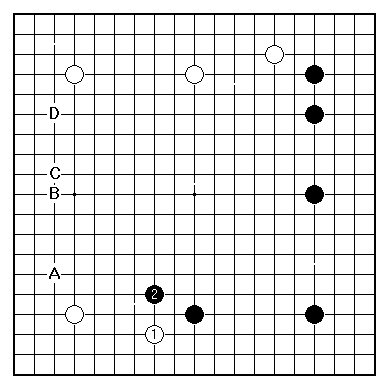

You also would like to see an example of the sort of position in which reading isn't much use. This will involve me in some homework.
What I'm looking for is a position with many candidate plays, where it is hard to imagine solemnly choosing amongst them on the basis of concrete variations brought to a firm conclusion. That's not the usual characterisation of a complicated or sharp position: where it may be difficult to bring enough of one's analysis to definite judgements of outcome, but doing so, at least partially, is the only basis for action.

This is the opening position I come up with, on the basis of some research of my own. Surprisingly, perhaps, the intense study of the Go openings doesn't reach expression in codified opening theory, at least as offered to the general public in book form. What we have here is up to move 9 in a perfectly normal Three Stars (Japanese sanrensei) opening. White's next play, judged by professional games, might be at one of the 11 points marked 'x'.
Well, this may appear undramatic. For the most part the candidates are on the left-hand side of the board. So far Black has a framework expanding north and west from the lower right corner. White similarly has a more vague framework based around the upper left. The majority of the options under consideration build it up on the left, or contest the ground on the lower side where there is an obvious gap or no-man's-land between the claims of the two players. A couple of the suggested plays invade in the lower right corner. These might have been experiments: there is a groundswell in commentaries against getting closely involved in fighting too early, when there are good development points to be had elsewhere.
To fulfil my pledge, and bring out the distinctive character of this type of position, I really need to convince you of several general points:
To avoid being terminally diffuse, let's have some particular variations.

White 1 takes up position on the left side, making a Three Stars formation to match Black's. Black 2 as shown can support immediate development into the centre, if Black wants to jump up; and avoids being flattened out (as Black does to White by playing at E). Here Black can also try any of A up to G. You can say that further plays by White and Black build up the picture, but resolve little. The number of possible invasions left around the board remains something like a dozen.

Another representative variation. White plays for territory on the lower side. Black 2 would be a way to emphasise the centre. Black's other options at A to D are different ways of dealing with the left side, now clearly the largest open space on the board.
Go wasn't and isn't always played this way. Other strategies are more systematically acquisitive; you could even say that no mainstream opening idea is less concerned with taking territory upfront. The Three Stars formation was born in the 1930s, to the accompaniment of a great deal of fuss; and has always remained somewhat controversial. Its great champion in recent times has been Takemiya Masaki, one of the great 9 dans and innovators.
Takemiya's play has been described as "mazy". He himself has said that he enjoys positions where he has no idea where his opponent will play next. This is a definitive comment against using reading to predict the course of the game, though not against its value to check out contingencies. Takemiya steers for such foggy battlegrounds both with Black and White.
First published 31 August 2000 as On Your Side on MindZine,
Go Learning
© Charles Matthews 2000.